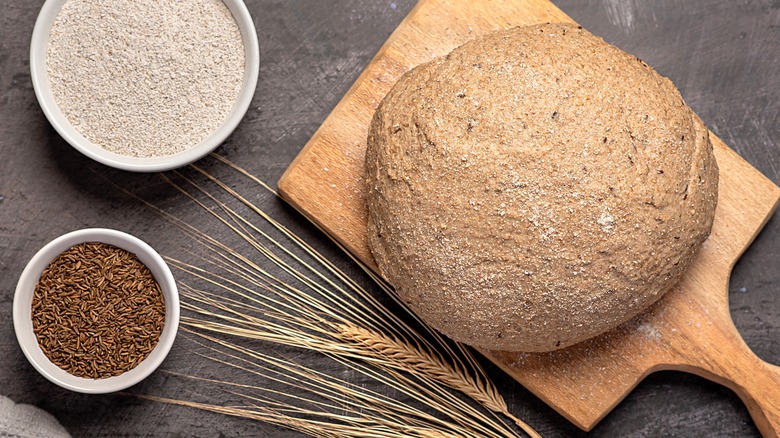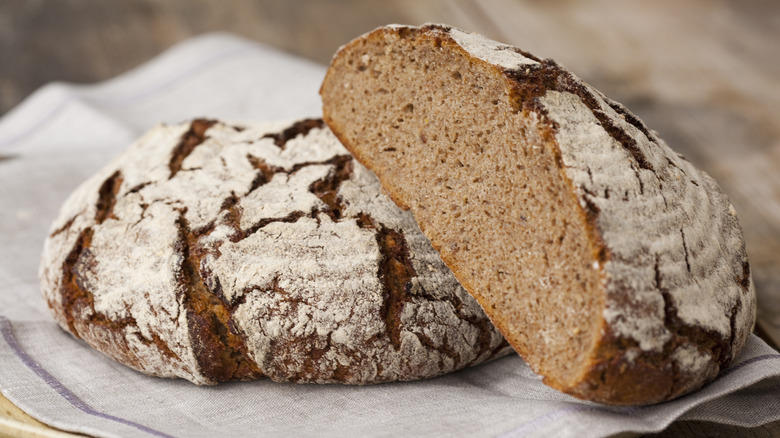3 Crucial Tips For Kneading Rye Bread Dough
We may receive a commission on purchases made from links.
The process of kneading bread dough is what develops gluten. Proper gluten development is what gives a loaf of bread its structure. But not all breads are created equal in terms of kneading techniques. In fact, the method of kneading depends entirely on the ingredients used in a specific loaf. Although rye flour inherently contains gluten proteins and is not gluten-free, they are present in lesser amounts than in wheat flour. Because of this, rye flour develops little to no gluten in bread dough. But what if you use rye and wheat flour? Nathan Myrhvold, founder of Modernist Cuisine and co-author of Modernist Bread at Home, shared with us three helpful tips for kneading breads made with different percentages of rye flour.
For doughs made with only rye flour, the kneading process is simple. "Just mix it to a homogeneous mass," Myrhvold says. "A 100% rye dough is almost impossible to overmix." If your dough contains anything over 60% rye flour, you have a few options. The bread expert advises to "use the paddle attachment to mix. Otherwise, use a dough hook." He also notes that 100% rye breads or majority rye breads can also be hand-mixed easily, since you don't have to worry about gluten development. But intermediate (30-59%) rye breads and rye-flavored breads contain a majority of wheat flour, so it's a different story. "They'll need to be mixed to medium gluten development," he explains. "They can be shaped and baked free-form."
Other things to note about making rye bread at home
Although we've claimed before that you should always knead bread dough by hand, the case is different with rye due to its low gluten content. So, if you're making a rye-forward bread, feel free to break out that KitchenAid stand mixer, set it up with the dough hook or paddle attachment, and let it do the mixing work. Remember, you only really need to focus on incorporating the ingredients together fully; these types of rye breads can be no-knead bread doughs.
And for those rye-flavored breads that include a considerable amount of wheat flour, too, you can knead these by hand. Keep in mind that there's more to the flavor of rye bread than just rye flour, though. A key ingredient that gives rye bread its flavor is caraway seeds, so make sure to get your hands on some before you begin baking! McCormick Gourmet Organic Caraway Seeds are our go-to because they are affordable, organic, and flavorful.

